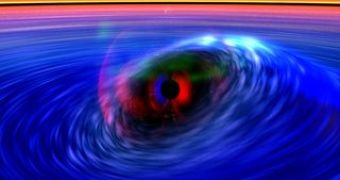Black holes produce gravitational fields so powerful that they are able to shape space-time around them. However, what shape that particular volume of space surrounding the black hole might take under the influence of such an extreme gravitational field is unknown, as are the effects that might produce the powerful magnetic field generated by a magnetar. Imaging the gravitational or magnetic field of such objects is basically impossible, not to mention that the resolution of any instruments capable of making such observations would be to no use.
However, black holes did teach us a rather important lesson: 'if you can't see an object or a structure, then try to make sense of the effects it has on the surrounding medium.' This is the exact same technique that will be used in the case of the newly proposed Gravity and Extreme Magnetism mission, GEMS for short, which will rely on making observations of X-ray emissions coming from black holes or magnetars in order to learn about their gravitational and magnetic effects on the surrounding space.
As we all known, X-rays are just another form of light, much more powerful though and invisible to the naked eye. Light is an electromagnetic radiation, a self-propagating wave formed of an electrical and a magnetic field oscillating perpendicular to each other and the direction of propagation. The beauty of light is that it can be polarized, meaning that the electric field can oscillate on a preferential direction, such as when light is scattered off a surface, for example.
"The extreme environments around black holes, magnetars, and the shocks from exploding stars called supernovae all produce X-rays. GEMS will be the first mission designed just to measure the polarization of these X-rays, which will enable us to explore these exotic places in an unprecedented way," said GEMS Principal Investigator Dr. Jean Swank of NASA's Goddard Space Flight Center.
During its mission, GEMS could reveal the way space-time is shaped by the powerful gravitational pull of a spinning black hole, how matter is drawn in the vicinity of the event horizon, how magnetic fields affect the regions around magnetars or what makes cosmic rays accelerate to very high energies in the outcome of a supernova event.
"GEMS will be able to tell the shapes of the X-ray-emitting matter trapped near black holes better than existing missions can -- in particular, whether matter around a black hole is confined to a flat disk or puffed into a sphere or squirting out in a jet. Since X-rays are polarized by the space swirling around a spinning black hole, GEMS also provides a method of determining black hole spin independent of other techniques, which is needed to check their accuracy," said Swank.
The main instrument of GEMS would be an X-ray detector in the form of a gas chamber that would generate electrons as X-rays are absorbed inside it. Measuring the characteristics of the electrons would immediately reveal the polarization of the received X-ray radiation.
NASA will decide in the spring of next year whether or not GEMS will launch into space along with other missions proposed for the NASA Explorer program, six so far, out of which only two will make it into space in 2012 and 2015.

 14 DAY TRIAL //
14 DAY TRIAL //